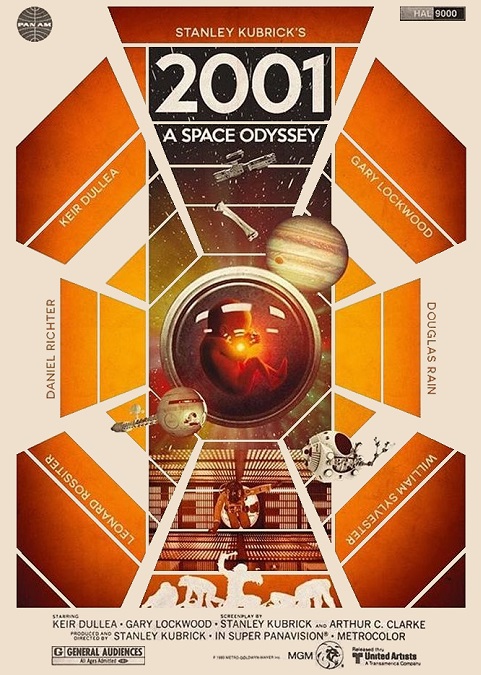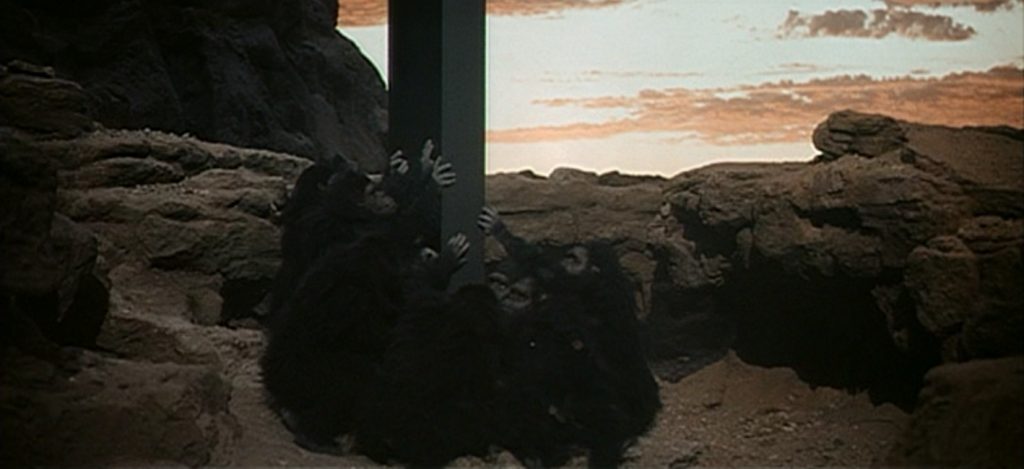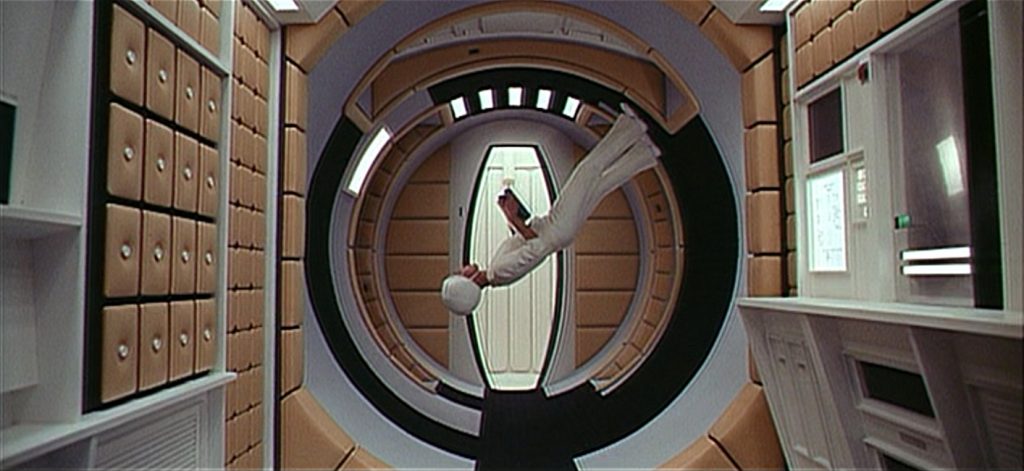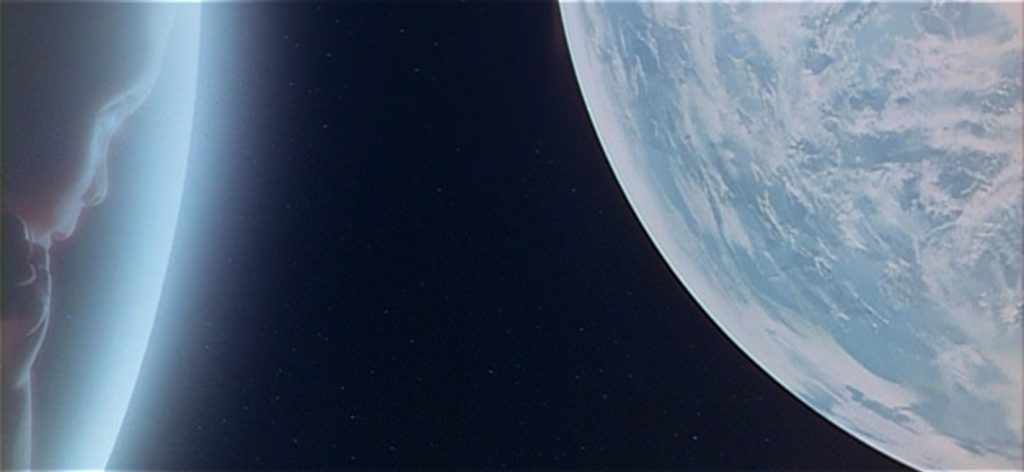



2001: A Space Odyssey (WINNER)

This movie was a true land mark in the field of special effects. It was one of the big ones. It was innovative, creative, visually stunning, and utterly enjoyable. And the effects were integral to the telling of a great science-fiction story. Some have called this film director Stanley Kubrick’s masterpiece. I did my research and found that many critics say that this is more than just a movie. It is a work of art. Kubrick was doing some really amazing things that had never been done before.
The first twenty minutes of the film are virtually silent. There is no music or underscoring as we are introduced to the ape-like creatures that would eventually evolve into the human race. And we are introduced to the enigmatic monolith that propelled them into a state of higher intelligence. The ingenious use of front projection in these early scenes was perfectly executed. From there we move directly into mankind’s ventures into outer space. We get some very realistic and scientifically accurate depictions of space travel. Kubrick built sets that rotated, and then fixed his cameras to rotate with them. The effect made it appear that the actors could walk up walls or run around the inside of a ring. It was ingenious, and looked fantastic! At other times, he would shift the sets sideways and film the wire-suspended actors from below. Their bodies would hide the wires from the camera, creating the illusion of floating.
In addition to those things, the scale models of spaceships and the gigantic spinning space station were incredibly detailed. Even the smaller two-man pods were meticulously designed and crafted. There was a scene in which a man in an EVA suit is killed and begins to drift off into space. The way he moved in zero-gravity was incredibly realistic, as was the scene when his body was retrieved.
And, of course, there was the film’s climax, the astronaut’s journey through the Stargate. He is drawn into a giant floating monolith near Jupiter, and taken into another world, a tunnel or a landscape of glowing lights, colors, and shapes. The surrealistic impressions we are given are of speed and distance. And I liked the final image of the Star Child. Audiences had certainly never seen anything like it.
The only effect I wasn’t certain of was the scene where the astronaut has to open the hatch of the main ship, then blow out the door of his pod, so that he is thrown into the open hatch. He is exposed to the vacuum of space for five or six seconds. He flies to the back of the airlock but then he pushes himself back to the exposed opening to manually close the hatch. He is able to do this, and then has to wait several more seconds for the airlock to re-pressurize. Then he walks away from the ordeal without any ill effects. For a movie that was so obsessive about its realism and scientific accuracy, would the man even be able to survive this, and if he did, wouldn’t he endure some kind of intense bodily damage? But no, he just shrugged it off like it was nothing. My research revealed that Bowman could have survived the ordeal, but he would likely have suffered traumatic injuries.